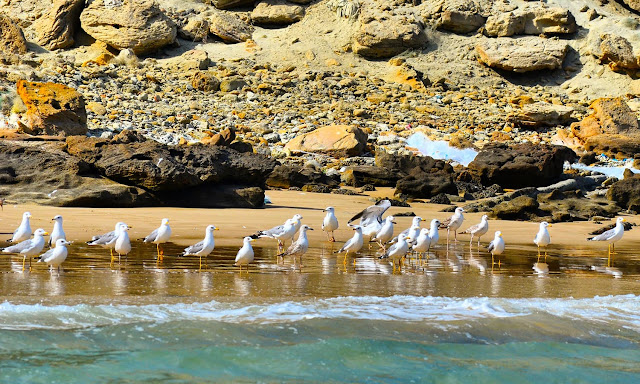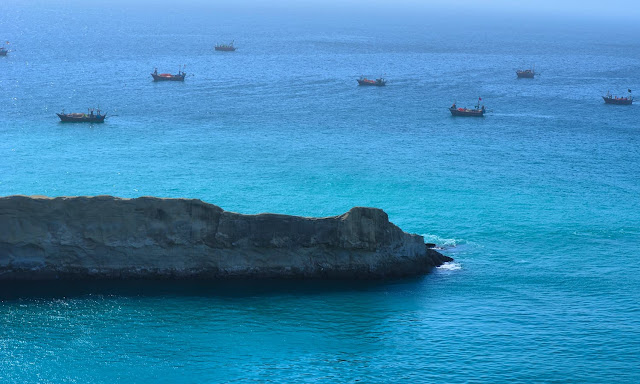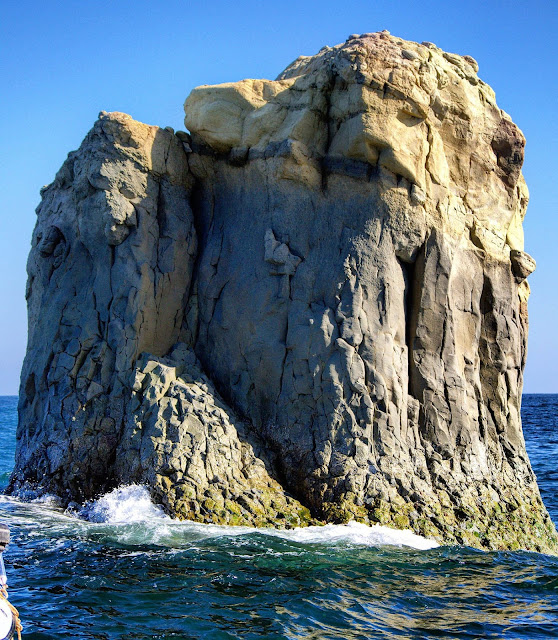The Shag Rocks are six small islands in the westernmost extreme of South Georgia, 240 km west of the main island of South Georgia, and 1,000 km off the Falkland Islands. The Shag Rocks cover a total area of fewer than 49 acres. Situated on the South Georgia Ridge, they have a peak elevation above sea level 246 ft and stand in water approximately 1,047 ft deep.
The average temperatures fall between −1.2 °C to 10 °C and rarely climbing above 15 °C. There is no considerable vegetation, but most of the rocks are covered by the guano of seabirds. The major wildlife found on the islands is the South Georgia shags, prions, and wandering albatrosses.
Shag Rocks has been the site of several shipwrecks. The history tells us, that in 1762, Shag Rocks
(Islas Aurora) discovered by Jose de la Llana with the Spanish Ship Aurora. The
famous Aurora Islands are being named after to this ship. Moreover, they were
visited frequently with the Spanish ship San Miguel in 1769, again by the
Aurora in 1774, and in 1779 by the Princesa and the Dolores. The Auroras were
finally mapped by the Spanish corvette Atrevida in 1794.
Though, the Aurora
Islands are considered by many legends to have been a mistaken sighting that
was coincidentally near the Shag Rocks, which were recognized to sealers prior
to 1823. Later on, they were later rediscovered by James P. Sheffield and given
their present name, most likely because shags and other seabirds frequent them.
They were charted
by Discovery Investigations staff on the William Scoresby in 1927. The first
known landing on the islands was made by Argentine geologist Mario Giovinetto
was lowered from a helicopter to collect rock samples in 1956. The Shag Rocks
form part of the British overseas territory of South Georgia and the South
Sandwich Islands. Prior to 1985, they came within the Falkland Islands
Dependencies. However, the Shag Rocks and Black Rock are laying claims by
Argentina.
Black Rock and Shag Rocks are on the route from the Falkland Islands to South Georgia Island, on a seamount of Scotia Ridge. In 1985, United Kingdom formed its overseas territory of South Georgia and the South Sandwich Islands, which includes Shag Rocks and Black Rock. Thus, it is now assumed accountability for preservation and defense of the area.
Product You May Interested
Crush Food Cravings with Odd Water Hack and Melt 62lbs
Flavor Pairing Ritual Supercharges Women’s Metabolisms
Unlock your Hip Flexors, Gives you More Strength, Better Health, and All-Day Energy.
60 Seconds of Habit! That Reversed Type 2 Diabetes and Melted 56 lbs of Fat
Boost Your Energy, Immune System, Sexual Function, Strength & Athletic Performance
Longest Living Doctors Unlocks Fastest Way to Burn Fat
Perfect Paleo Powder – The Easiest Way You Can Get the Protein & Critical Nutrients Your Body Needs
Lose weight, burn fat, boost metabolism and immunity, Fight inflammation & Increase your energy with this one ridiculously simple thing.
The Industry’s First Metabolism Fueling System That Heightens Thermogenesis Even While You Sleep.




















































